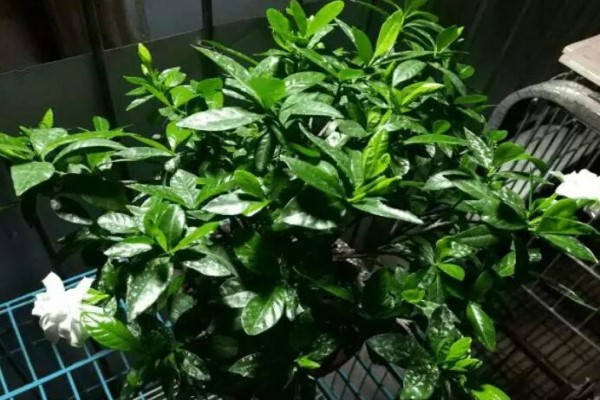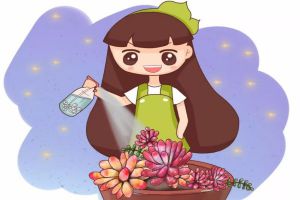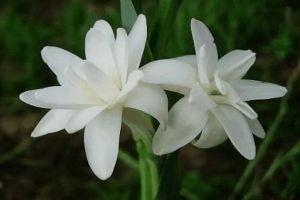Give the flower a melon, just like playing stimulant, blossom can not stop the brake!

Drink enzyme water for flowers, flowers can float 2 miles!
Friends who often raise flowers must be familiar with enzymes, but do you know that the watermelon peel we eat is also a good material for enzymes!
1. Save the remaining watermelon rind and cut it into small pieces. The red flesh on the watermelon rind can be removed without removing it. The red flesh contains a lot of sugar, which helps fermentation.
2, prepare a clean plastic bucket, if the bucket is dirty, you can put a handful of green beans, pour some water and shake hard, the bucket will be cleaned up.
3, making enzymes generally need to put some brown sugar, but watermelon flesh itself has a lot of sugar, so you can not add extra brown sugar, but if there are other peels at home, you can put them together.
4. Put the cut watermelon peel and other peels into a plastic bucket, add water, gently twist the bottle cap a few times without tightening, and ferment in a bright and ventilated place.
5, enzymes in the process of fermentation will produce a lot of gas, even if the cap is not tightened, but also every few days to open the cap to release gas. For those who are in trouble, put a balloon over the plastic bucket instead of the bottle cap.
6. The enzyme can be fermented in about a month. After fermentation, prepare watermelon enzyme according to the ratio of 1:500 to water. Pour gardenia once every half month. Gardenia flowers will bloom big and fragrant!
Jasmine drink watermelon water, flowers bubbling non-stop!
Recently, many flower friends asked Huahua, why the jasmine at home has not blossomed? Huahua teaches you a trick today. Give Jasmine some watermelon water to drink. Make sure there are more and more buds!
1. Scrape the red flesh of the leftover watermelon skin with a small spoon, so that small insects will not be attracted when watering the flowers.
2. Put the scraped watermelon rind into a basin and rinse it several times with clean water to avoid residual sugar.
3. Cut the watermelon rind into small pieces and put them into plastic buckets. Don't fill them too full. Just twist the bottle cap a few times. Usually every few days to see once, if the gas is too strong to open the bottle cap to breathe gas.
4, if there is a blender at home, you can directly stir the watermelon skin into juice, so that fermentation will be faster.
5. Put the plastic bucket in a sunny place and fully expose it to the sun. After about 20 days, the watermelon peel solution will ferment successfully.
6, fermented watermelon peel solution is acidic, according to the ratio of 1:50 water poured jasmine, 3-5 times in a row will find jasmine began to grow small buds!
Watermelon peel buried in the soil, flowers more and more prosperous!
Watermelon peel in addition to adding water to make enzymes, but also buried in the soil, after full fermentation, it will become a fertile nutrient soil!
1. Cut the leftover watermelon into small pieces, so that the decomposition time will be shorter and the decomposition will be more sufficient.
2. Prepare 2-3 strong plastic bags and a pot of garden soil. If there are more watermelon skins, you can directly prepare a foam box.
3, first spread a layer of soil in the plastic bag, about 3-5cm, then put a layer of watermelon skin, and finally cover a layer of soil.
4, the plastic bag tied tightly, plastic bags in the sun exposure is easy to break, it is recommended to set a few bags, and then put in a good place in the sun fermentation.
5. In about 1-2 months, the soil will ferment almost.
6. Fermented flower soil is rich in nutrients. What kind of flourishing?
- Prev

Succulent meat should also be pasted with autumn fat, and some materials should be buried in the basin to become a ball in a month!
The End of Heat passed and announced the official coming of autumn. How is your succulent plant after a summer's ordeal? Has it turned into crumpled jerky, or is it a skinny, stupid guy? Today, Huahua will teach you how to paste autumn fat to succulent plants and become chubby again!
- Next

You must not raise these seven kinds of flowers in the bedroom, or you will be in big trouble!
Recently, in the early morning and evening, the cool breeze brushed the face, making people really have the feeling of autumn, and it is also a good time to grow flowers. However, if you are eager to grow flowers, you should also pay attention to some flowers that can't be raised in the bedroom. Come and have a look at them, so as not to get caught up in it.
Related
- What if the leaves of potted flowers turn yellow?
- Florescence Control of several Flowers
- Anti-freezing technology and post-freezing nursing technology of flowers
- What is the classification of flowers? What are the common methods of flower classification?
- Prevention and control of alkali and acid damage of flowers in courtyard
- Technology of Anti-freezing and restoring growth of Flower seedlings in greenhouse and greenhouse
- How does flower fertilization not hurt the root? Fertilization technology of flowers
- Key points of disinfection in flower greenhouse
- Several pesticides that are banned or used cautiously in flowers
- How to fertilize the flowers that watch the leaves?

